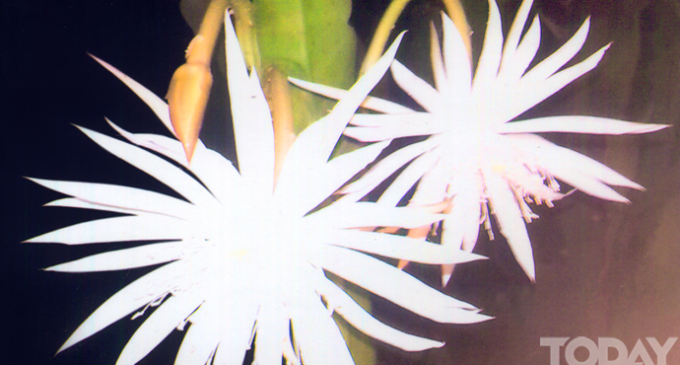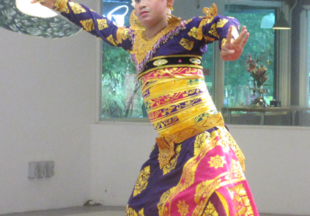Floral in myanmar culture Night blooming Lotus (Kumudra Lotus)

In Myanmar literature “Kumudra Lotus” night Blooming lotus often appears as most auspicious and sublime flower. Lotus is an aquatic plant of five different species which bloom together in the month of Thidingyut [October], the month of light festival. Lotus blooms in day time under sun light. The so called night blooming lotus “Kumudra Lotus is not lotus”. It is the bloom of a certain species of cactus botanically termed “cereus”. Some of these species, such as Selenicerus grandiflorus bloom only once in a year for a single night.
Myanmar call it night blooming lotus because the shape and the hue of this bloom resemble those of white lotus. Besides its faint fragrance is a gentle and sacred as that of lotus flower. But unlike aquatic lotus, it thrives either on ground or on bulky trees like orchid. It blooms at night, in the moon light. So very respected name in Pali Kumudra is given to it and talks are woven and poems are composed about it. Its name ကုမုျဒာၾကာ is used in performing arts and commercials.
Internationally this night bloom is given sacred or romantic names such as “Princess of the night” “Honolulu Queen” “Christ in the manger” Queen of the night” etc. etc
Regardless of genus or species, night blooming cereus flowers are almost always colours always white or very pale shades of other colours, often large, the size of lotus bloom, and frequently fragrant. Most of the flowers open after nightfall and by dawn, most are in the process of wilting. The plants that bear such flower can be tall, columnar, sometimes extremely large tree-like, but more frequently are thin stommed climbers. In Myanmar they are climbers mostly on bulky big trees while some night blooming cereus are grown indoors in homes or green houses in colder climates most of these plants are too large or ungainly for this treatment and are only found outdoors in tropical areas.
The species “Hylocereas undatus is culti-vated outdoor for commercial purpose. The so-called and gaining popularity in Myanmar and Southeast Asia region is its fruit called “dragon fruit” နဂါးေမာက္သီး because of its pleasant taste and which some herbalists say is good for your health, especially protective of all cancers.
In literature, the night blooming cactus has become the title on the theme of both fiction and non-fiction genres. Robert Thornton’s “18th century illustrated Portfolio of Flora “Temple of Flora” gives a long illustrated essay on Night blooming Cereus”. You will also find a good account of this flower in Jacque Line Carey’s Legacy Book Series.
Shani Mootoo’s novel’s title is “Cereus Blooms at Night”. In Robert Hayden’s Book of Poetry, one poem is entitled “The Night Blooming Cereus.” In 1986 Joan Hadley wrote a novel “The Night Blooming Cereus”. Night Blooming flower is referred to as ” Loneliness of the Night” in a novel by Yun Mi-Kyung “The Bride of the Water God”. It is said that these night blooming flowers are paired. If you pluck one, the other will drop dead. So they are metaphorically named “Short-lived Love”. Love Star Girl a novel by Jerry Spericlli and The Warmth of the Other Suns, novel by Isabel Wilkenson focused on this flower. In the latter, a yearly neighbourhood ritual of watch-ing it bloom at night is vividly described.
Sithu Dr Khin Maung Nyunt
./wp-content/uploads/2018/10/Emirate-Online-TDY.png)































There are no comments at the moment, do you want to add one?
Write a comment